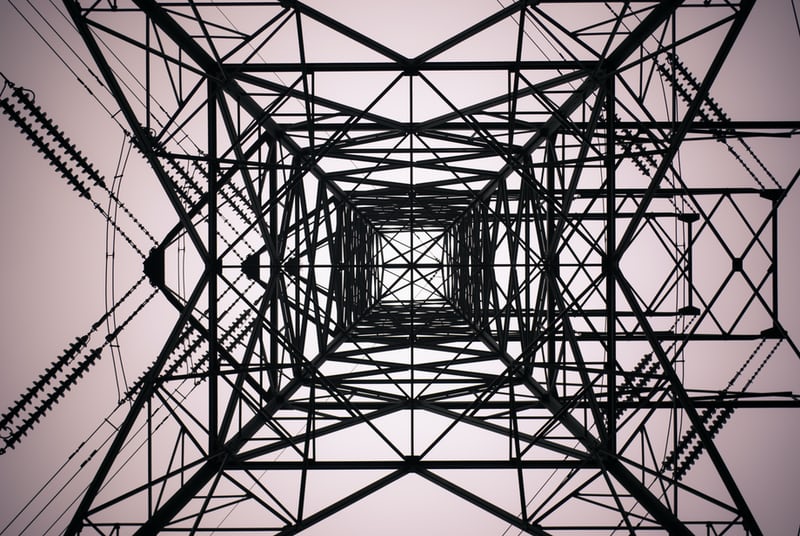Utility companies haven’t needed to think much about competition since their inception in the late-1800s. The rise of government regulations and corporate consolidations during the 20th century largely meant that consumers could only purchase electricity from a local utility company. That paradigm is challenged more than ever, as utilities face the duel strain of increasingly accessible distributed energy resources (DERs) technologies and global decarbonization legislation meant to curb emissions.
Technological improvements in distributed energy resources (DER) are introducing new types of competition for utility companies. As renewable energy technologies become more efficient and affordable, consumers have increasingly turned to DER technologies as a supplemental resource of electricity generated by utility companies. In 2019, 56% of U.S. households already had solar panels or had given serious thought to installing solar systems, a 6% increase from 2016. Of those who expressed serious interest:
- 96% cited saving money as a reason.
- 87% said that they wanted to help the environment.
- 60% said they believe that solar would improve their health and that of their families.
Regulators also have plans to mandate changes within the energy industry. In 2021, the primary sources of energy in the U.S. included:
- Petroleum – 35%
- Natural gas – 34%
- Coal – 10%
- Nuclear – 9%
Renewable sources only account for 12% of U.S. energy consumption, although that figure is rapidly changing. Twenty-two U.S. states, districts, and territories have plans to reach 100% clean energy by 2050. Additionally, the federal government has committed to “reaching net-zero emissions economy-wide by no later than 2050,” which requires an imminent shift from fossil fuels to emission-free renewables. Utility companies that do not adapt to these requirements may miss out on valuable revenue streams while squandering an opportunity to enhance their grid reliance. Likewise, distributed energy resources (DERs) present an opportunity for utility operations to satisfy customers, keep the grid in balance, and meet Net-Zero 2050 initiatives. Utilities that invest in distributed energy response management systems (DERMS) now will find pivoting much easier than those that wait until the market forces them to.
Distributed Energy Resources Are Bringing Households & Communities Closer to Energy Independence
As the average consumer thinks about adopting household energy independence, costs like purchasing and installation present a logistical concern that is decreasing to match the accessibility of the technology. The high upfront investment in solar remains intimidating, but technological innovations have made it a more attractive option over the last decade.
First Solar created the first solar panel to exceed 18.2% efficiency in 2015. Today, high-end solar cells can top 30% efficiency. In 2022, even a mid-range solar system can exceed 20% efficiency. These improvements in efficiency, engineering, and durability have made solar competitive with electricity from utility companies, while distributed energy resources continue to rapidly evolve and keep pace with demand. Currently, commercial solar power costs between $.06 to $0.08 per kWh. Likewise, power from residential systems costs $0.08 to $0.10 per kWh. These prices include the cost of buying and installing systems. They also include the federal tax credit available in 2022.
Energy rates vary significantly by state, but the average American can expect to pay about 10.42 cents per kWh. Hawaii’s higher rates (about 30.55 cents per kWh) make that price seem slightly higher than it is for most people. Still, the trend is obvious: solar power has become a viable and increasingly cost-effective competitor for utility companies. That trend will only escalate as residential and commercial systems improve.
Just as importantly, households that invest in solar systems don’t need to worry about fluctuating prices. Consider that average electricity prices in Texas increased approximately 56.25% (8 cents to 12.5 cents per kWh) between 2017 and 2021. Consumers know that they have little control over the price of energy. Embracing solar energy lowers concerns by adding predictability to household budgets.
DER Microgrids Have Become a Reality
Even if households can generate all of the power they need, it would still require a mass prosumer adoption of distributed energy resources to disrupt the role that utility companies play. Recently, DERs have presented a fascinating opportunity for modern utilities, through the use of community microgrids, virtual power plants that can help provide grid stability during peak demand times.
Microgrids don’t need to connect with larger grids. They can operate independently through the power produced from solar panels, generators, and other local sources. For example, the small town of Onslow, Australia sustained its power needs for 80 minutes on a sunny day in 2021.
In the U.S., the Bronzeville Community Microgrid reached a milestone of energy self-sufficiency when it disconnected from the larger grid serving the Chicago area. The microgrid relies on a combination of rooftop solar, natural-gas-fired generators, batteries, and advanced controls. Currently, it can only sustain itself during emergencies, but it’s a significant step toward giving communities more energy independence.
The Evolving Role of Utility Companies
The Onslow and Bronzeville microgrids aren’t experiments funded by environmentalist groups eager to show that the world can make a radical turn toward renewable resources. Instead, these microgrid projects were led by Horizon Power and Commonwealth Edison (ComEd), respectively. ComEd spent more than a decade researching, developing, and building the Bronzeville Community Microgrid. ComEd put its money (about $20 million) into the project, too, proving that its leaders believe DERs are valuable to the future of its business. An additional $5 million came from the Department of Energy, corporate sponsors, and the Illinois Institute of Technology.
Horizon Power, ComEd, and a growing number of utility companies see that they need to anticipate industry changes and start adapting now so they can position themselves for future financial success. As distributed energy resources become increasingly available, utility companies will face customer decentralization, earning less money from electricity generation while facing mounting challenges to meet legislation meant to satisfy global decarbonization efforts.
On top of these pressures, municipal governments are setting expectations and holding utilities accountable. For example, the Metro City Government in Louisville, KY recently unveiled plans to reach 100% clean energy by 2040. The city says that it will explore forming a municipality if the local investor-owned utility company, LG&E, does not meet that goal. Boulder, San Francisco, and San Diego have also explored this option. More than 2,000 communities have already formed public power utilities.
Grid Stewardship & Utility Companies
With DERs rapidly becoming more affordable, efficient, and connected, to utilities, adopting a competitive mindset is key to staying innovative. While utilities will continue to dominate the energy distribution market for the foreseeable future, they are evolving into stewards of the grid that help communities reach their energy demand more efficiently while meeting emission standards established by government regulations.
This uncertainty has led to some extreme positions. Recently, California lawmakers proposed controversial legislation that would dramatically cut financial incentives that have greatly benefitted solar panel adoptions. Part of that bill suggests the creation of a “grid participation charge,” ostensibly to help balance potentially lost revenues. While these mandates present a serious challenge to the distributed energy resource industry, they, in turn, portend a shift in utilities from producers to grid stewardship.
Distributed Energy Resource Tech Disruption Conclusion
The message is clear: utility companies that don’t comply with demands will continue to miss opportunities to secure their respective grids, as well as revenue streams. Incorporating DERs into existing infrastructure is the most sensible way to reach these goals. When cities decide that they can fill their electricity needs without large utility companies, the entire industry will change. The utility companies that accept their roles as grid stewards will have more opportunities to prove their usefulness and remain influential in the future of energy.






